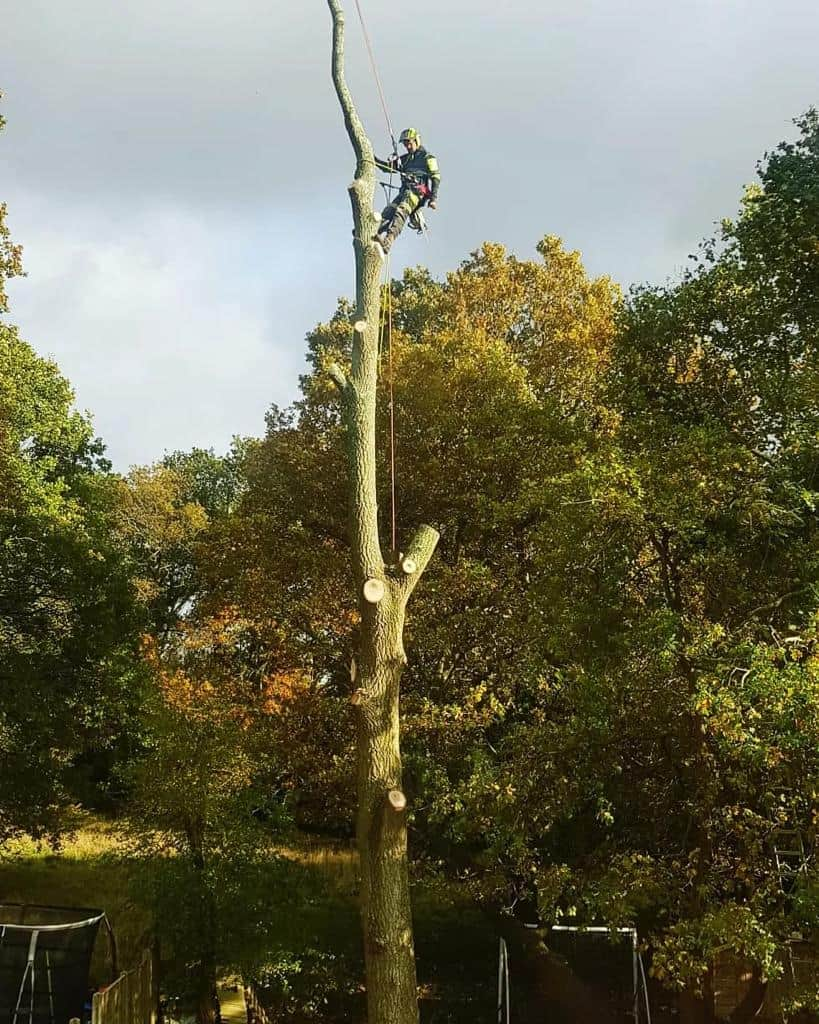Introduction
If you’ve ever witnessed a tree brought down by strong winds, you’ll know the damage can be severe—not just to the tree itself but also to surrounding properties, power lines, and vehicles. As UK weather patterns continue to shift, high winds and aggressive storms are becoming increasingly frequent. That’s why tree trimming isn’t just about looks—it’s a matter of safety.
At Waltham Abbey Tree Surgeons, we’ve seen first-hand how proper maintenance can reduce the risk of storm damage dramatically. In this post, we’ll explore how strategic trimming helps trees stay upright, resilient, and far less likely to become a danger during windstorms.
The Role of Tree Trimming in Wind Resistance
Tree trimming, or crown reduction and thinning, can significantly reduce a tree’s wind resistance. A dense crown acts like a sail during strong gusts, catching the wind and putting stress on the trunk and roots. By selectively removing branches, you:
- Allow wind to pass through the canopy more easily
- Reduce the leverage effect on the tree during storms
- Improve the tree’s balance and centre of gravity
This lightens the overall load and helps prevent snapping or uprooting.
Identifying Weak Points Before the Wind Does
Wind doesn’t just exploit a tree’s surface—it finds its weaknesses. Trimming provides an opportunity to inspect for and remove structural flaws, including:
- Deadwood that can snap and fall
- Crossing or rubbing limbs that may weaken over time
- Infected or split branches vulnerable to breakage
By preemptively removing these issues, we prevent future hazards and reduce the chance of sudden branch failure.
Preventing Property and Public Risk
One of the key concerns for property owners is the risk of falling branches causing damage. A well-maintained tree is far less likely to shed limbs in high winds. Regular trimming helps:
- Keep branches clear of roofs, fences, and driveways
- Protect pedestrians and vehicles in public areas
- Comply with local safety expectations for tree management
Especially in residential streets or commercial premises in Waltham Abbey, safety is both a legal and practical necessity.
Promoting Long-Term Tree Health
Storm resistance isn’t just about a single gust—it’s about durability over the years. Regular pruning not only keeps the structure strong but also encourages healthy growth, which naturally improves a tree’s resilience.
Some benefits include:
- Reducing the risk of internal rot by improving air circulation
- Encouraging stronger branch development over time
- Minimising water retention that can weigh down limbs
Ideal Timing for Wind-Prep Trimming
Late autumn or early winter—before peak storm season—is often the best time to trim. At this point, trees are starting to enter dormancy, making it easier to spot issues and less likely to impact growth. Of course, urgent trims can be carried out at any time if hazards are identified.
Conclusion
Tree trimming is one of the simplest yet most effective defences against storm-related damage. It turns potential liabilities into assets—protecting not just your garden but your entire property. At Waltham Abbey Tree Surgeons, we specialise in preparing trees to withstand the British weather and helping homeowners rest easy, even when the wind howls.
Looking to safeguard your trees before the next storm hits? Get in touch today to schedule a professional assessment—we’ll make sure your trees are safe, sound, and storm-ready.
Call us on: 01992 929 594
Click here to find out more about Waltham Abbey Tree Surgeons
Click here to complete our contact form and see how we can help with your tree care needs.

